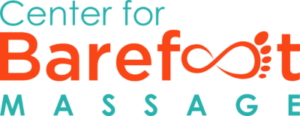Get ready for this years Barefoot Massage Open Challenge! This year’s topic for the “Open” is on common physical imbalances of Barefoot Massage Therapists that could result in injury. Our instructors have been talking behind the scenes A LOT about all the things that make up “body mechanics“… things like your alignment while working, as well as what movement possibilities and what common restrictions Barefoot Massage Therapists are working around. Together, we’re compiling tips and tricks, videos, exercises and food for thought content for everyone that will help your body be ready and pain free to give a long career full of barefoot massage sessions!
Make sure to subscribe to our new SubStack, which works like a blog and newsletter in one! As we post new content, it’ll show up in your inbox, too! That’s where the challenge will be posted.
We haven’t been able to consistently post an actual ANNUAL challenge, because, well, life. It all started in 2018 and coincided with the CrossFit Open – just something for Barefoot Massage Therapists to push themselves through. We’ve had 3 so far, and this will be our 4th! The goal all along with these challenges has been for you to get out of your box and try something NEW. Our main focus when teaching FasciAshi is for you to make the techniques effective because you are educated on the theory and feel the ease of its application flow through your body. Your inner wisdom shines through when you are able to contemplate WHY or HOW your massage strokes work. When that is put into action in the most physically efficient and effective way possible for your body, you can see progress in yourself, your clients, and you’ll have a seriously better chance of staying in this profession longer.
We’ve got fresh content coming weekly starting March 8th, 2024 – but in the meantime, did you know that we’ve also got an archive of challenges from previous years?! You can dive into them for the 1st time, or the 10th!
Here’s a list of past years’ Barefoot Massage Open Challenges:
(Or just go watch the YouTube Playlist if reading is TMI RN!)
2021 “reSOLEutions”
This was a 3-month long, content creating challenge that pushed you to create NEW content on specific topics that educated YOUR community: Jump in on that challenge here – it was only 1 blog post to pull you through the entire project >>>
2019 “Mobility & Massage”
This was an ambitious 2x/week 5-week challenge that had you moving and massaging in ways to create more physical endurance and mindfulness in your sessions. Jump in on any of the weeks here>>>
- Week 1 Mobility “Footwork”
- Week 1 Massage “Music”
- Week 2 Mobility “Knees”
- Week 2 Massage “X-ray Vision”
- Week 3 Mobility “Hips”
- Week 3 Massage “Mindfulness”
- Week 4 Mobility “Spine”
- Week 4 Massage “20 Minutes”
- Week 5 Mobility “Shoulders”
2018 “Ashi-Challenge”
This was our first challenge that pushed you out of the routine and encouraged you to work more creatively than robotically. Try these challenges out and see how it changes your approach.
- Week 1 “Feet First”
- Week 2 “Non-Dominant foot for 20 minutes”
- Week 3 “Face Up”
- Week 4 “Not Yo’ Momma’s Ashi”
- Week 5 “Weight then Wait”
Stay tuned to our new SubStack for what we are preparing for you in March!




















